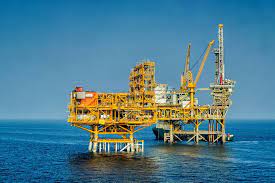With its burgeoning offshore oil and gas prospects, Namibia is set to firmly establish itself as one of the continent’s hydrocarbon investment hotspots when it headlines the 2024 Invest in African Energy forum scheduled for May in Paris.
Exploration campaigns led by supermajors Shell and TotalEnergies, along with state-owned QatarEnergy, unlocked a quintet of hydrocarbon treasures in Namibia’s Orange Basin between 2021 and 2023, placing the country’s upstream oil and gas sector on the brink of transformation.
The three companies have over the past two years made conclusive oil discoveries in the Graff-1, La-Rona-1, Jonker-1X, Lesedi-1X and Venus-1 blocks in the offshore Orange Basin.
French major TotalEnergies announced last month that it was continuing with exploration activities in the offshore Orange Basin, with appraisal drilling underway south and north-west of the Venus-1 discovery.
The company has already intersected hydrocarbon-bearing intervals in the Mangetti-1X prospect, located 35 km from the Venus-1 discovery.
“These developments and more will be unpacked at the Invest in African Energy forum in Paris, where a Namibian spotlight session establishes Namibia as the premier destination for diversified energy investments,” forum organisers Energy Capital & Power said on Tuesday.
Beyond the offshore bounty, Namibia also holds massive onshore oil and gas potential.
The onshore Kavango Basin holds immense promise, with the basin estimated to harbour more than 30 billion barrels of crude oil.
Onshore exploration efforts are gaining momentum, with companies like ReconAfrica and 88 Energy actively pursuing opportunities.
With production expected to start in 2026, the Kudu Conventional Gas Field – one of Namibia’s most prolific assets – is currently in its Front-End Engineering Design (FEED) stage. The FEED stage involves production of technical documents for the project, confirmation of product specifications, and clarification of the scope of the project.
Home to nearly 600 billion cubic feet of natural gas reserves, the Kudu project is expected to reach a peak production of 64 million cubic feet per day.
Namibia’s ambition extends beyond fossil fuels, with the country targeting to become a global leader in green hydrogen development.
Abundant solar and wind resources position Namibia as an ideal location for green hydrogen production.
Last May, Namibia commissioned sub-Saharan Africa’s largest green hydrogen production plant – a US$10-billion project led by green hydrogen development company Hyphen Hydrogen Energy and with potential to produce 300,000 tonnes of green hydrogen and ammonia. It will feature wind and solar plants with a combined capacity of seven gigawatts.
With production costs estimated as low as $2 per kilogramme, Namibia’s green hydrogen is poised to become the cheapest in the world, making the country an attractive partner for energy-hungry countries in the midst of the energy transition
JN/APA


